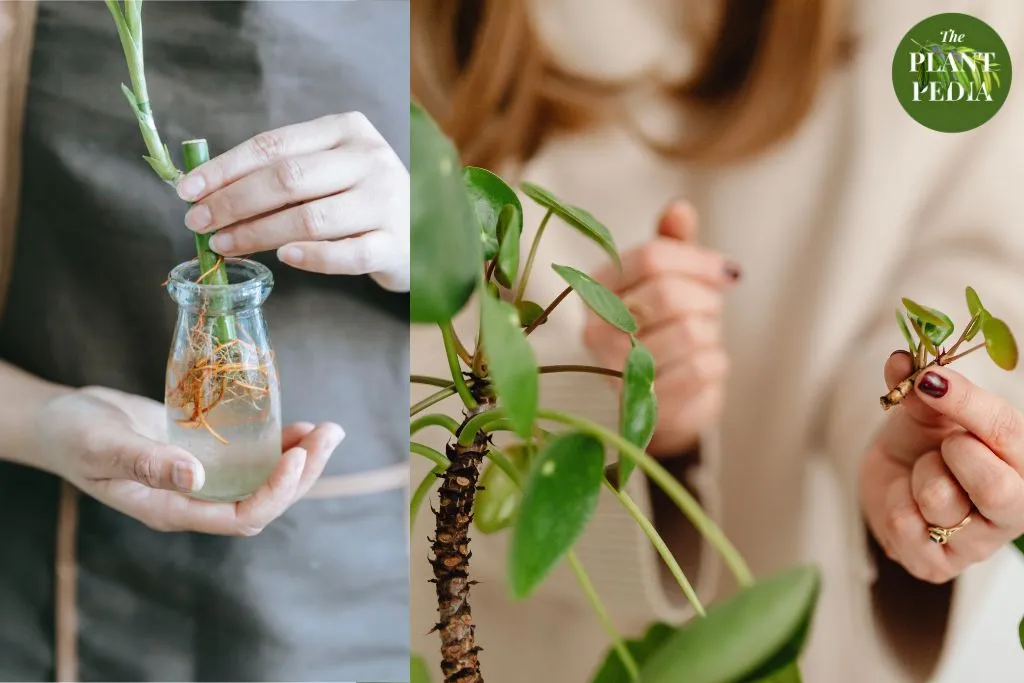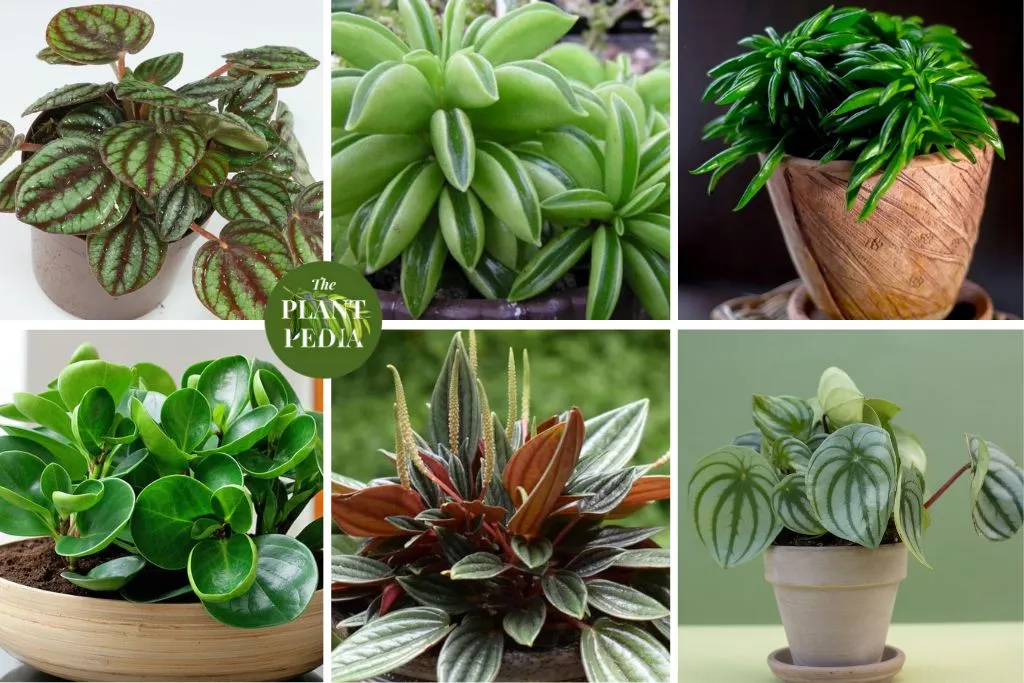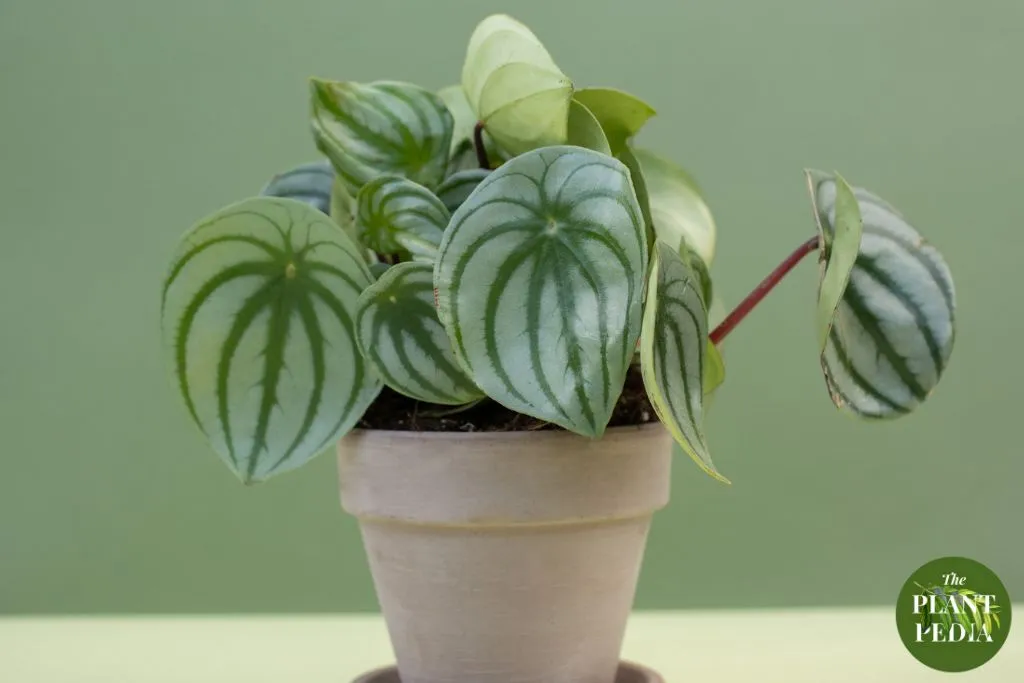Peperomias (radiator plants) are a delightful and diverse group of houseplants known for their unique foliage and ease of care.
With their charming leaves that come in various shapes, sizes, and colors, peperomias have become a favorite among plant enthusiasts.
One of the most rewarding aspects of growing peperomias is propagating them. Whether you’re a seasoned gardener or a novice plant lover, peperomia propagation can be an exciting and fulfilling endeavor.
In this comprehensive guide, we will delve into the world of peperomia propagation, exploring different techniques, tips, and factors that contribute to successful propagation.
Table of Contents
Understanding Peperomia Plants
Before we dive into the propagation methods, let’s take a moment to understand the peperomia plant itself.
Peperomias belong to the Piperaceae family, which is native to Central and South America. With over 1,000 known species, peperomias offer a wide range of leaf shapes, colors, and textures.
Some popular peperomia varieties include Peperomia obtusifolia, Peperomia caperata, Peperomia argyreia (Watermelon Peperomia), and Peperomia prostrata (String of Turtles).
Peperomias are well-suited for indoor environments due to their adaptability to varying light conditions and relatively low maintenance requirements. Their compact size makes them perfect for small spaces, and their intriguing foliage adds a touch of natural beauty to any room.

Why Propagate Peperomias?
There are several reasons why plant enthusiasts might want to propagate their peperomias:
- Expanding Your Collection: If you have a favorite peperomia plant, propagating it allows you to grow new plants and expand your collection without purchasing new ones.
- Preserving Genetics: Propagation ensures that you have backups of your cherished peperomia varieties, especially if they are rare or hard to find.
- Gifts for Friends: Sharing your passion for plants with friends and family by gifting them propagated peperomias can be a heartwarming gesture.
- Learning Experience: Propagation is an excellent way to learn more about plant biology, growth, and care.
Also Read: Is Peperomia Toxic to Cats? A Comprehensive Analysis.
When to Propagate Peperomias
Propagating peperomias at the right time is crucial for ensuring the success of your propagation efforts.
While peperomias can be propagated throughout the year, there are certain periods that are more optimal for different propagation methods.
Here’s a breakdown of when to propagate peperomias based on the specific techniques:
Time for Leaf Cutting Propagation:
Leaf cutting propagation involves taking a healthy leaf from the parent plant and encouraging it to develop roots.
The best time for leaf cutting propagation is during the plant’s active growth phase, which typically occurs in spring and early summer.
During this time, the plant has higher energy levels and is more likely to produce new roots.
Time for Stem Cutting Propagation:
Stem cutting propagation involves taking a portion of the stem with leaves and nodes to create a new plant.
Similar to leaf cutting propagation, the best time for stem cutting propagation is during the active growing season, which is spring and early summer.
The plant’s energy is directed towards growth, making it more receptive to root development.
Time for Division:
Division is a propagation method in which you separate offsets or stems from the parent plant to create new plants.
The ideal time for division is also during the plant’s active growth period in spring and early summer.
This is when the plant is actively producing new shoots and has the energy to support the growth of divided sections.
Considerations:
While spring and early summer are generally the best times for peperomia propagation, it’s important to consider the specific climate and conditions in your region.
If you live in an area with distinct seasons, the timing might vary. Additionally, indoor peperomias can be propagated year-round as long as you can provide the necessary care conditions, such as adequate light, humidity, and temperature control.
Remember that successful propagation is influenced by factors like humidity, temperature, light, and the overall health of the parent plant.
Regardless of the time of year, ensure that you are providing the optimal conditions for root development and growth.
How to Propagate Peperomia
Peperomias can be propagated through various methods, each with its own set of advantages and challenges.
The most common propagation techniques for peperomias include:
1. Leaf Cutting Propagation:
Leaf cutting propagation involves taking a healthy leaf cutting from the parent plant and encouraging it to develop roots and eventually grow into a new plant. Here’s a step-by-step guide:
- Select a Healthy Leaf: Choose a mature, healthy leaf from the parent plant. Make sure it’s free from any pests or diseases.
- Cutting the Leaf: Use a clean, sharp knife or scissors to make a clean cut just below a node. A node is a small bump or growth point on the stem where leaves and roots emerge.
- Callus Formation: Place the leaf cutting in a dry, shaded location for a few days to allow the cut end to callus. This helps prevent rot when you plant it.
- Potting Mix: Prepare a well-draining potting mix. You can use a mixture of peat moss, perlite, and a bit of sand.
- Planting the Cutting: Plant the callused end of the leaf cutting into the potting mix, burying the node slightly. Water the soil lightly.
- Humidity and Covering: Cover the cutting with a clear plastic dome or place a plastic bag over the pot to create a humid environment. This helps retain moisture and encourages root growth.
- Root Development: Keep the cutting in bright, indirect light and maintain humidity. Roots should begin to develop in a few weeks to a couple of months.
- Transplanting: Once the cutting has developed a sufficient root system, you can transplant it into a slightly larger pot with regular peperomia care.
2. Stem Cutting Propagation:
Stem cutting propagation involves taking a portion of the stem with leaves and nodes and encouraging it to root and grow into a new plant. This method is particularly suitable for peperomias with thicker stems:
- Choose a Stem Cutting: Select a healthy stem with at least a few leaves and nodes. Nodes are essential for root development.
- Cutting the Stem: Use clean, sharp scissors or pruning shears to make a diagonal cut just below a node. This increases the surface area for root development.
- Remove Lower Leaves: Trim the leaves near the bottom of the cutting, leaving a few leaves at the top.
- Callus Formation: Similar to leaf cutting propagation, allow the cut end of the stem cutting to callus for a few days.
- Potting and Rooting: Plant the stem cutting into a well-draining potting mix, burying the node in the soil. You can also dip the cut end in rooting hormone before planting.
- Humidity and Care: Create a humid environment using a plastic dome or bag. Place the cutting in bright, indirect light and maintain consistent humidity.
- Root Development: Roots should start to develop in a few weeks to a couple of months. You can gently tug on the cutting to feel if there’s resistance, indicating root growth.
- Transplanting: Once the cutting has established a healthy root system, you can transplant it into a slightly larger pot with standard peperomia care.
3. Division:
Division is a propagation method that works well for peperomias that naturally produce offsets or have multiple stems growing closely together. Here’s how to do it:
- Select the Parent Plant: Choose a mature peperomia plant that has multiple stems or offsets emerging from the base.
- Prepare the Plant: Gently remove the parent plant from its pot and carefully separate the offsets or stems. Ensure that each division has its own set of roots and leaves.
- Potting: Plant each division into its own pot using well-draining potting mix. Make sure the roots are positioned appropriately and are covered with soil.
- Watering and Care: Water the newly potted divisions and place them in a location with bright, indirect light. Follow standard peperomia care guidelines for watering and maintenance.

Factors Affecting Peperomia Propagation Success
While peperomias are generally easy to propagate, there are several factors that can influence the success of your propagation efforts.
These factors include:
- Season: Propagation is often more successful during the plant’s active growing season, which is typically spring and early summer. This is when plants have the most energy for root development.
- Light: Bright, indirect light is ideal for encouraging root and plant growth. Avoid placing newly propagated cuttings in direct sunlight, as this can cause stress and dehydration.
- Humidity: Maintaining high humidity around the cuttings helps prevent excessive moisture loss and encourages root development. Plastic domes, bags, or humidity trays can be helpful tools.
- Temperature: Peperomias prefer warm temperatures between 65°F to 75°F (18°C to 24°C) for successful propagation. Avoid exposing cuttings to cold drafts.
- Potting Mix: Well-draining potting mix is crucial for preventing root rot. A mix containing peat moss, perlite, and sand in appropriate proportions can provide good drainage.
- Rooting Hormone: While not always necessary, using a rooting hormone can increase the chances of successful root development, especially for stem cuttings.
- Patience: Propagation takes time. It’s important to be patient and allow the cuttings or divisions to establish healthy root systems before transplanting or expecting significant growth.
Troubleshooting Common Propagation Issues
Propagation is a learning experience, and it’s normal to encounter challenges along the way.
Here are some common issues and how to address them:
- Rotting Cuttings: If your cuttings are rotting before they can root, it’s likely due to excessive moisture. Ensure proper drainage, and avoid overwatering.
- No Root Growth: If you see no root growth after several weeks, check the humidity levels and ensure the cuttings are receiving enough indirect light.
- Wilting Cuttings: Wilting can be a sign of underwatering or poor humidity. Keep a close eye on moisture levels and maintain a humid environment.
- Yellowing Leaves: Yellowing leaves could indicate overwatering, poor drainage, or root rot. Adjust your watering routine and potting mix as needed.
- Stagnant Growth: If your propagated plant isn’t showing much growth, ensure it’s receiving adequate light, nutrients, and temperature conditions.

Related FAQs:
Here are some frequently asked questions (FAQs) related to peperomia propagation, along with detailed answers:
When is the best time to propagate peperomias?
The best time to propagate peperomias is during their active growing season, which typically falls in spring and early summer. During this period, the plants have higher energy levels, which promotes successful root development.
Can I propagate peperomias in water?
While water propagation is possible for some plants, it’s generally not recommended for peperomias. Peperomias are susceptible to root rot if kept in water for extended periods. It’s better to use well-draining potting mix for propagation to prevent moisture-related issues.
Do all peperomias propagate well from leaves or cuttings?
Most peperomia species can be propagated from leaves or cuttings, but the success rate can vary depending on the specific variety. Some peperomias with thicker leaves or stems may be more suitable for stem cutting propagation, while others with succulent-like leaves can be propagated from leaf cuttings.
Should I use rooting hormone for peperomia propagation?
Using rooting hormone is optional but can increase the chances of successful root development, especially for stem cuttings. Rooting hormone encourages the growth of roots, helping the cutting establish itself more quickly. However, many peperomias can root successfully without rooting hormone.
How long does it take for peperomia cuttings to root?
The time it takes for peperomia cuttings to root can vary depending on factors such as humidity, temperature, and the specific peperomia variety. In general, you can expect to see root development within a few weeks to a couple of months.
What is the ideal humidity level for peperomia propagation?
Peperomias prefer a humid environment for successful propagation. Aim for a humidity level around 60-80%. You can achieve this by using a plastic dome, plastic bag, or humidity tray to create a microclimate around the cuttings.
Can I propagate a variegated peperomia and maintain its variegation?
Yes, you can propagate variegated peperomias, but keep in mind that not all propagated plants will retain the same level of variegation as the parent plant. Variegation is influenced by genetics and environmental factors, so while some propagated plants may exhibit similar variegation patterns, others might not.
Can I propagate peperomias in a larger pot to save time?
Propagating peperomias in larger pots isn’t recommended. It’s best to start them in appropriately sized pots to prevent overwatering and promote root development. Larger pots can hold too much moisture, leading to issues like root rot.
Can I propagate peperomias from offsets?
Yes, many peperomia varieties produce offsets, which are small, baby plants that emerge from the base of the parent plant. These can be gently separated and potted individually to propagate new plants.
What should I do if my propagated peperomia isn’t growing?
If your propagated peperomia isn’t showing significant growth, assess its care conditions. Ensure it’s receiving appropriate light, maintaining proper humidity, and isn’t overwatered. Sometimes, plants take time to establish their root systems before visible growth occurs.
Can I propagate a peperomia that has outgrown its pot?
Yes, if your peperomia has become root-bound or outgrown its pot, it’s a good opportunity to propagate it through division. Gently separate the plant into smaller sections with roots and replant them in appropriately sized pots.
Are there any peperomia varieties that are challenging to propagate?
While most peperomias are relatively easy to propagate, some varieties might have lower success rates due to their specific growth habits or requirements. It’s best to research the particular needs of the peperomia species you want to propagate to increase your chances of success.
Remember, propagation is a learning process, and each plant might respond differently.
Patience, observation, and adjusting your techniques based on the results will help you become a successful peperomia propagator over time.
Conclusion
Peperomia propagation is a rewarding journey that allows plant enthusiasts to expand their collection, share their passion, and learn more about plant biology.
Whether you choose leaf cutting, stem cutting, or division, understanding the specific needs of your chosen peperomia variety and providing the right conditions are key to successful propagation.
With a bit of patience, care, and attention to detail, you can create new peperomia plants that will thrive and bring beauty to your indoor space.
Happy propagating!


